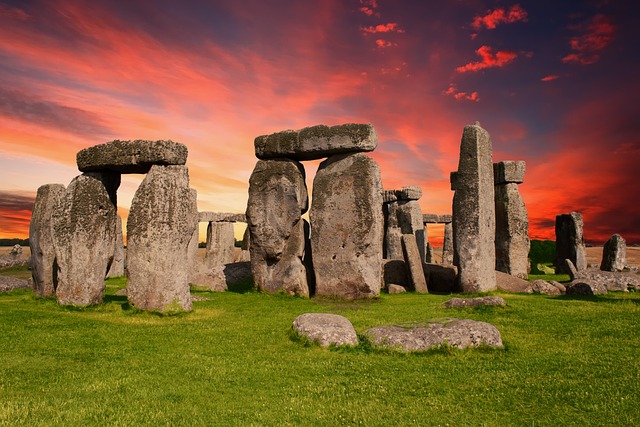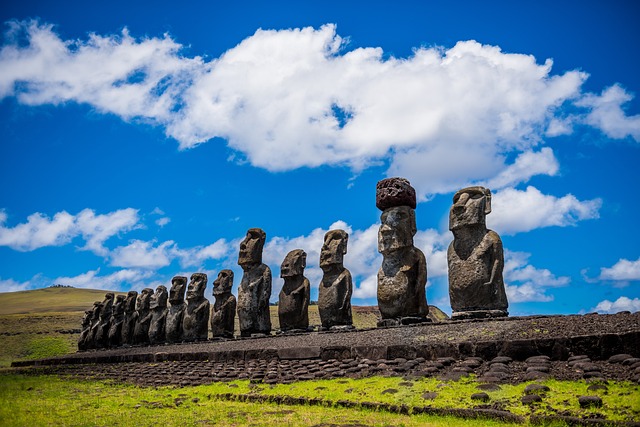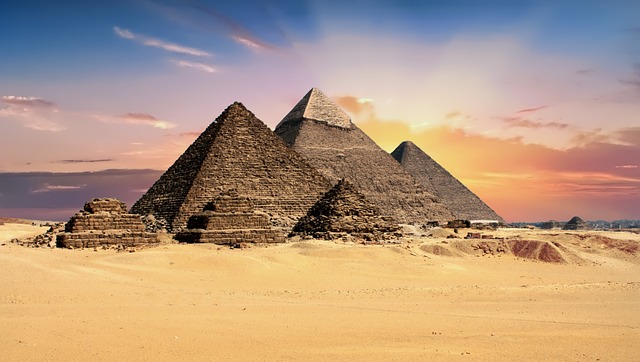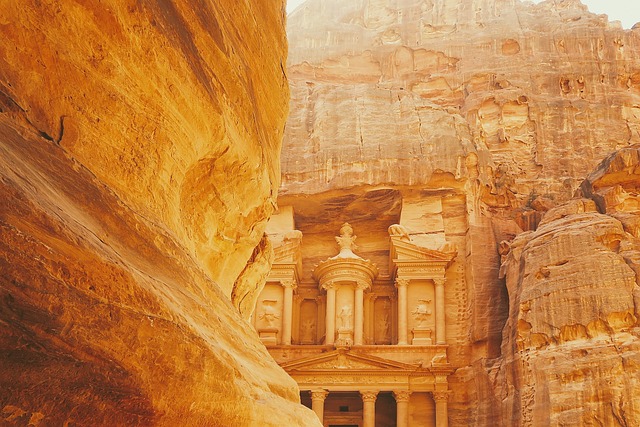Acropolis of Athens, Greece: Marvel at the Marvelous Marble!
Perched on a rocky outcrop above the city of Athens, the Acropolis of Athens is a beacon of ancient civilization and a testament to human creativity and engineering. This imposing site stands as a symbol of the achievements of ancient Greeks, showcasing architectural marvels that have influenced building styles for centuries. Centuries of history echo through its ruins, where democracy took its early steps and philosophers pondered the mysteries of existence.

Amidst the bustling modern city, the Acropolis offers a portal to the past, with its iconic structures such as the Parthenon serving reminders of the region’s storied heritage. Declared a UNESCO World Heritage Site, this ancient citadel contains the remnants of several historically significant buildings. Its enduring legacy continues to captivate visitors, drawing them to gaze upon the very spots where notable figures of antiquity once stood.
Key Takeaways
- The Acropolis is an iconic symbol of ancient Greek civilization.
- It’s home to the Parthenon and other historically significant buildings.
- Designated as a UNESCO World Heritage Site, it continues to mesmerize the world.
Historical Significance

The Acropolis of Athens: not just another rocky outcrop with a few columns, but a beacon of heritage whispering tales of glory, resilience, and kebab-fueled excavations.
Ancient Beginnings and Mycenaean Roots
Mycenaean period, Bronze Age warriors galore: Think burly chieftains, shiny bronze helmets, and the early bling of ancient Greece. They set the stage for the Acropolis, which had its Mycenaean heyday with monumental structures even before the Bronze Age wrapped up.
Golden Age Glory and Persian Pile-up
5th Century BC, enter Pericles: Under his watch, Athens hit its stride, kicking off the Golden Age of Athens. This was when the Parthenon, Erectheion, and other showstoppers went from blueprint to icon, despite the Persians doing their best cannonball run through town.
Medieval Mash-ups and Ottomans Overstay
Ottoman Turks make themselves at home: Not only did they claim the crib, but the Venetians lobbed a cannonball party invite in the form of an artillery strike — talk about unwelcome guests at the Acropolis!
Modern Times and Museum Marvels
21st-century marvels, anyone? The New Acropolis Museum is the cool, contemporary kid on the ancient block. It stands in contrast to the British Museum, which still holds pieces of the Acropolis’ past—a hot topic among tourists who fancy a side of repatriation debate with their ticket.
Assaults by Time: Vandalism and Restoration
If you think ancient vandalism was just naughty graffiti, think again. The Acropolis has seen its fair share of unwelcome decor courtesy of looters, while pollution played the slow and steady tortoise in this race of ruin. The Committee for the Conservation of the Monuments on the Acropolis hustles to reverse the clock’s damage — or at least pause it a bit.
Myths, Cults, and Cultural Shindigs
Athena and Poseidon had themselves a divine throwdown in what amounted to Greece’s ultimate reality show. The Cult of Athena paraded their spiritual pomp, while religious festivals were the ancient equivalent of Coachella but with more togas and fewer flower crowns.
Celebrity Sightings: Famous Footprints on the Rock
From Odysseus dropping by on his way home to Perseus ticking off his monster-slaying checklist, celebs have made their mark here. Pausanias inked the first travel blog of the joint, and we’re still following his footsteps.
Digging the Past: Archaeology and Research
Archaeologists sift through the centuries with the excitement of kids in a Lego store—except these bricks tell epic tales. Research into the Acropolis is like peeling an onion with an infinite number of layers, each a snapshot of time minus the tears.
Acropolis in Pop Culture: From Films to Memes
Yes, the Acropolis has had its Hollywood close-up, but it’s also meme royalty. From stumbling through videos of cats playing harp on the steps to humorous memes of Socrates dropping knowledge bombs, pop culture adores this ancient rock star.
The Magnificent Monuments

Adventure through time as we embark on a stone-by-stone saga of the greatest hits of the Acropolis of Athens. Behold, where marble, myths, and monumental mastery meet!
The Parthenon Chronicles
Amidst the Acropolis, the Parthenon stands, as if it’s casually flexing its Doric muscles for the passersby. Housing the works of Phidias, including the sculptural masterpiece, the Parthenon Frieze, this temple has been the talk of the town since 5th century BC. The Parthenon’s groove has been felt across millennia, and not even a pesky explosion could topple its eternal cool.
Erechtheion: A Tale of Six Ladies
This Ionic Temple, the Erechtheion, is where things get sassy with architecture. The Caryatids, or as the locals call them, the eternal ladies of stone-cold support, have been carrying the weight of a porch on their heads with elegance for ages. These maiden sculptures are more than just pretty faces; they’re the load-bearing fashionistas of antiquity.
Temple Tantrums: Athena Nike’s Abode
On a rock, but not on the rocks, stands the Temple of Athena Nike, a sanctuary so quaint and delicate that one might mistake it for an divine dollhouse. This temple’s got wings – well, sort of – it’s dedicated to a victorious aspect of Athena, who was clearly the winged favorite of her time.
Lost and Found: Throwback to Propylaea and Beulé Gate
A gateway so grand, the Propylaea practically screams ‘welcome to the big league’ to every entrant. Right next to it, the Beulé Gate might seem like a sidekick, but it’s no less important in the annals of Acropolis entryways. They say every exit is an entry somewhere else, and these gates prove just that, but with an extra helping of flair.
Romantic Ruins: Theatre of Dionysus and Odeon of Herodes Atticus
Lastly, let’s give a standing ovation to the Theatre of Dionysus, arguably the birthplace of dramatic eye rolling and tragedy facepalming. And then there’s the Odeon of Herodes Atticus; not just an old pile of rocks, but an amphitheater that has rocked on from travertine tunes to modern music. The ruins here don’t just whisper history; they put on a full-scale Broadway-worthy production of it.
Rocky Foundations

Before the magnificent structures we gawk at today, the Acropolis was just a big, rocky hill waiting for its moment in the architectural spotlight. Let’s dig into the gritty details of its stony beginnings, shall we?
Let’s Get Geological: Cretaceous Limestone and More
The Acropolis stands proud on a hefty chunk of limestone, dating back to the Late Cretaceous period. Picture dinosaurs nipping at its heels—that’s how old this rock is! Predominantly composed of Cretaceous limestone, this geological goldmine provided sturdy foundations for what would become a symbol of ancient grandeur.
Acropolis Elevated: Why Build on a Plateau?
Why perch a city on a plateau? Defense, divine views, and the downright drama of it! The Acropolis, set on its plateau above Athens, provided a strategic vantage point against invaders. Plus, flanked by the Hill of the Nymphs and the Hill of the Muses, it’s no wonder the Greeks chose this spot for something sacred.
Quench Your Thirst: The Mysterious Klepsydra Spring
Nestled on the slopes of the Acropolis is the Klepsydra Spring, a natural hydration station for the ancient Athenians. This wasn’t your average watering hole; the spring held mythical status as the watering can for the sacred rock.
Cityscaping with Sacred Rocks
You can’t talk about the Acropolis without mentioning its beloved sibling, Lycabettus, the tallest hill in Athens. But here’s the kicker: according to legend, the Acropolis’s limestone pedigree was meant for Lycabettus, until the gods fumbled it! Divine delivery mishap aside, the Acropolis became the choice lump of sacred rock to bear the weight of temples and treasuries.
Meet the Celebrities

The Acropolis of Athens has been the ultimate A-list party since ancient times. Talk about an evergreen hotspot! We’ve seen everyone from mythical kings to divine celebrities grace this sacred rock. Imagine a red carpet event, but instead of velvet ropes, there are colossal Doric columns and, of course, no paparazzi—just chisel-wielding sculptors capturing the famous faces in marble.
Ancient Athenians would mingle where philosophers once trod, toasting the goddess Athena for that splendid olive tree. Very eco-chic. Pericles, the city’s former head honcho, might have played host, proud of this architectural triumph—The Parthenon—in his honor (though he’d never admit it).
In attendance, you’d also find Phidias, flaunting his masterpiece, the statue of Athena Parthenos; that’s right, a golden get-up weighing in at a whopping 44 talents (about 1.1 tonnes of gold)! Who said bling was a modern invention?
| Guest List | Noteworthy Contribution |
|---|---|
| Goddess Athena | Gave Athens the olive tree (thanks, girl!) |
| Pericles | Sponsored the ultimate renovation project |
| Phidias | Designed Athena’s statue; what a craftsman! |
| Mythical Kings | Arguably started the whole “founding a city” trend |
| Athenian Architects | Drew plans without AutoCAD; respect |
The illustrious line-up wouldn’t be complete without the crafty Odysseus spinning tales by the Bluebeard Temple—oops, that’s the Erechtheion. Watch your step, or you might trip over the tomb of a mythical king or stub your toe on the Man-Serpent balustrade. Ouch!
Let’s face it, the Acropolis is the place to be seen, even if your last headshot was a sculpture from 400 BC. Now smile for the sculptors; they’re making history.







